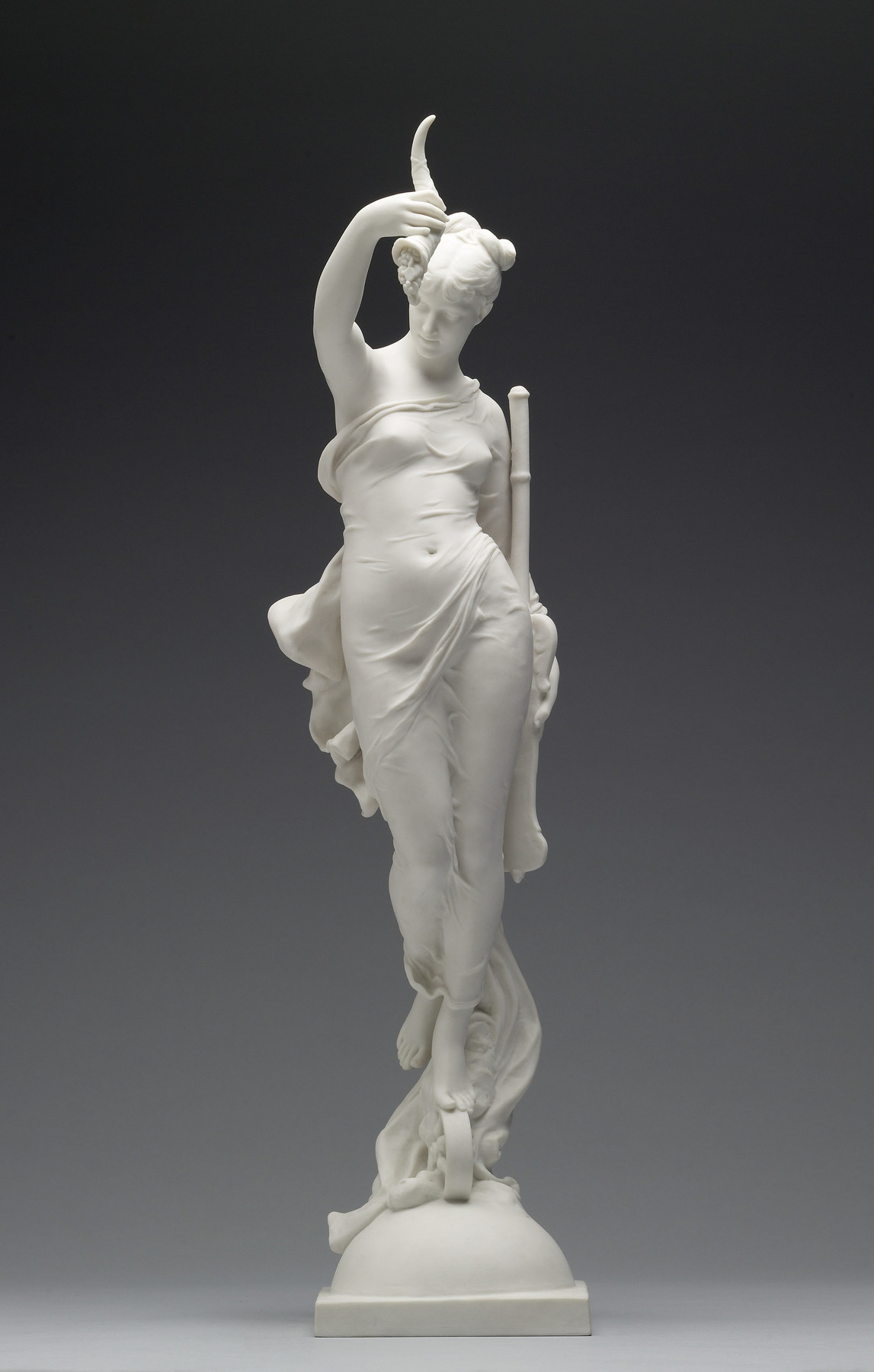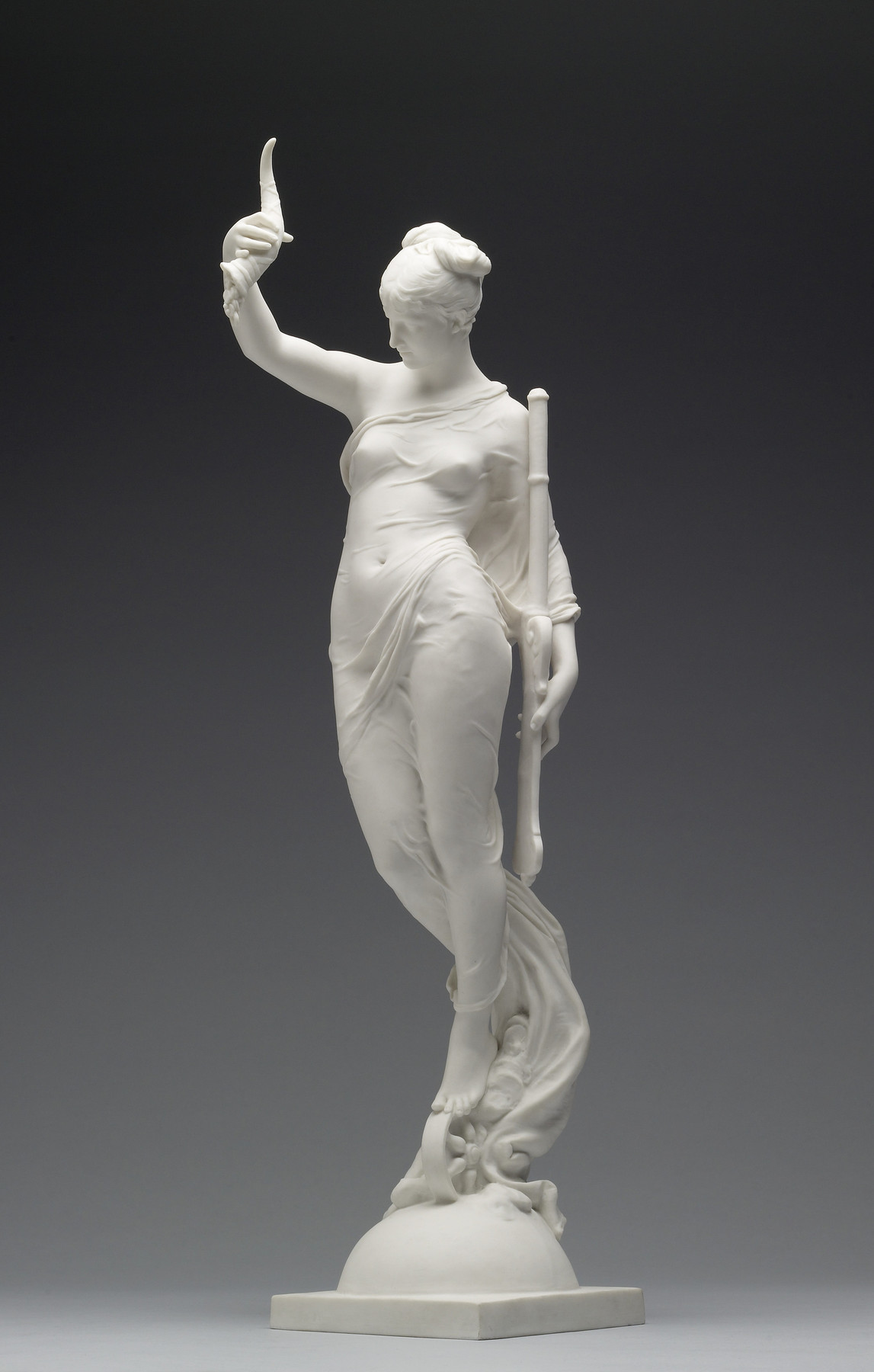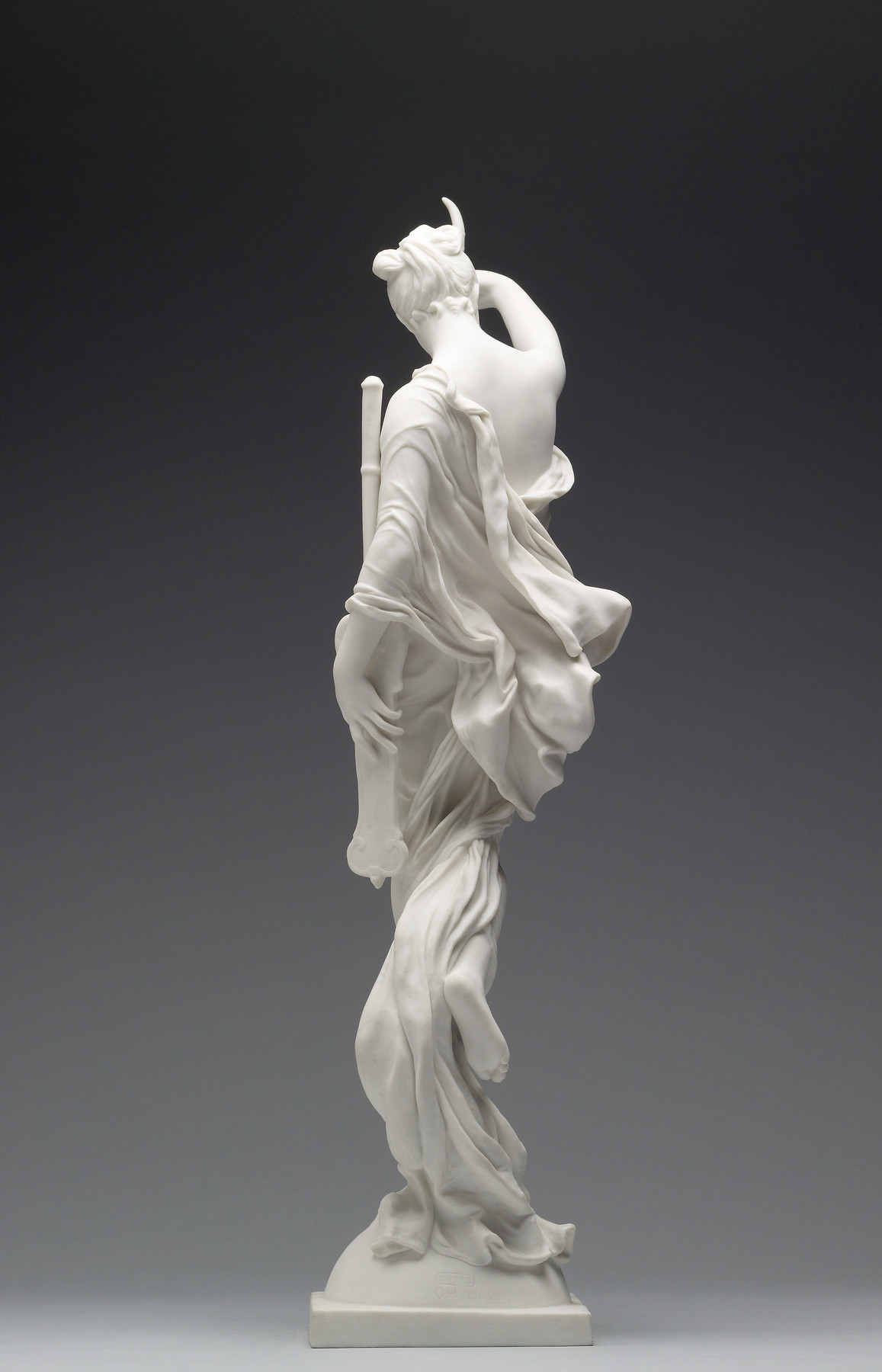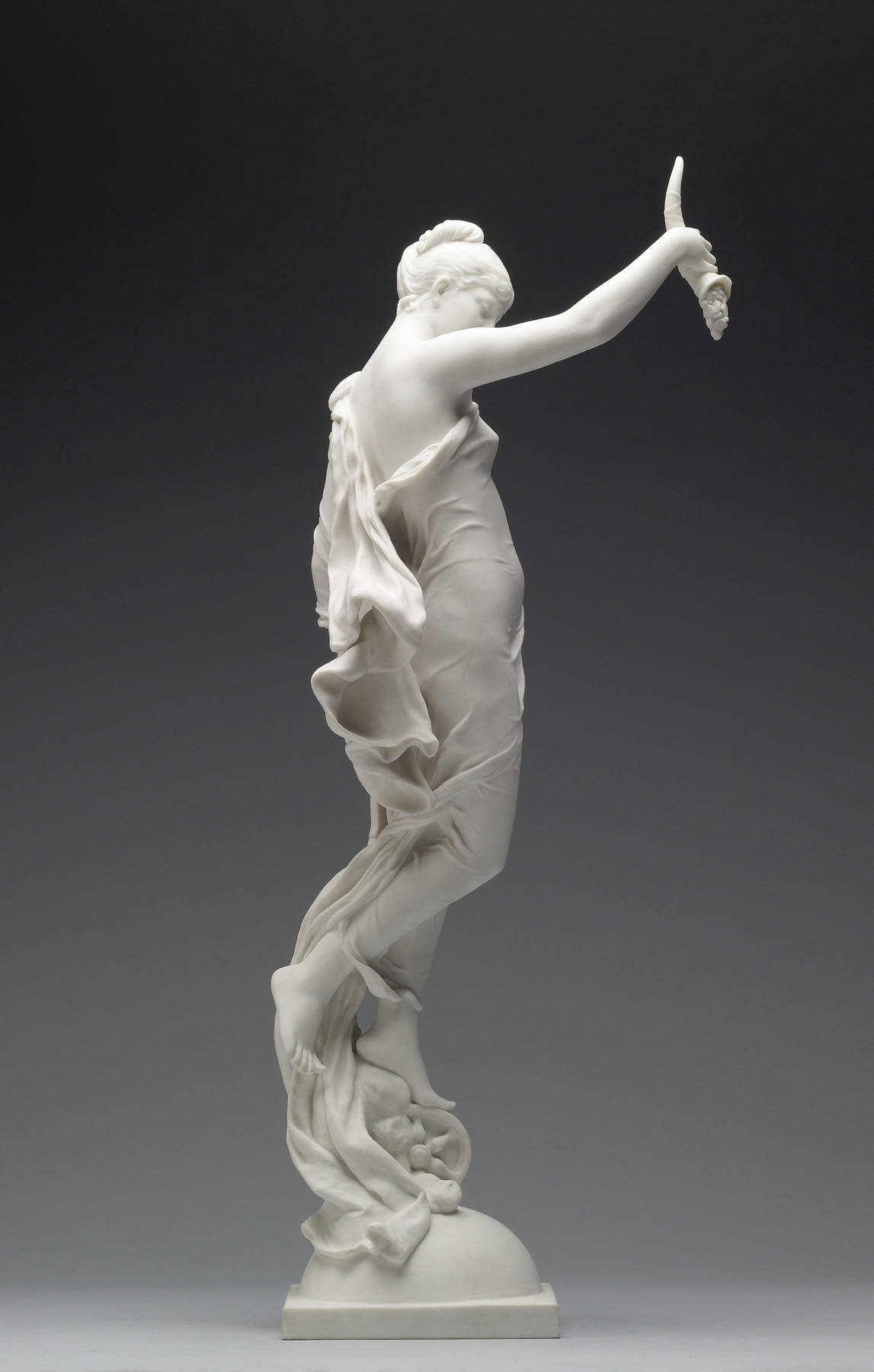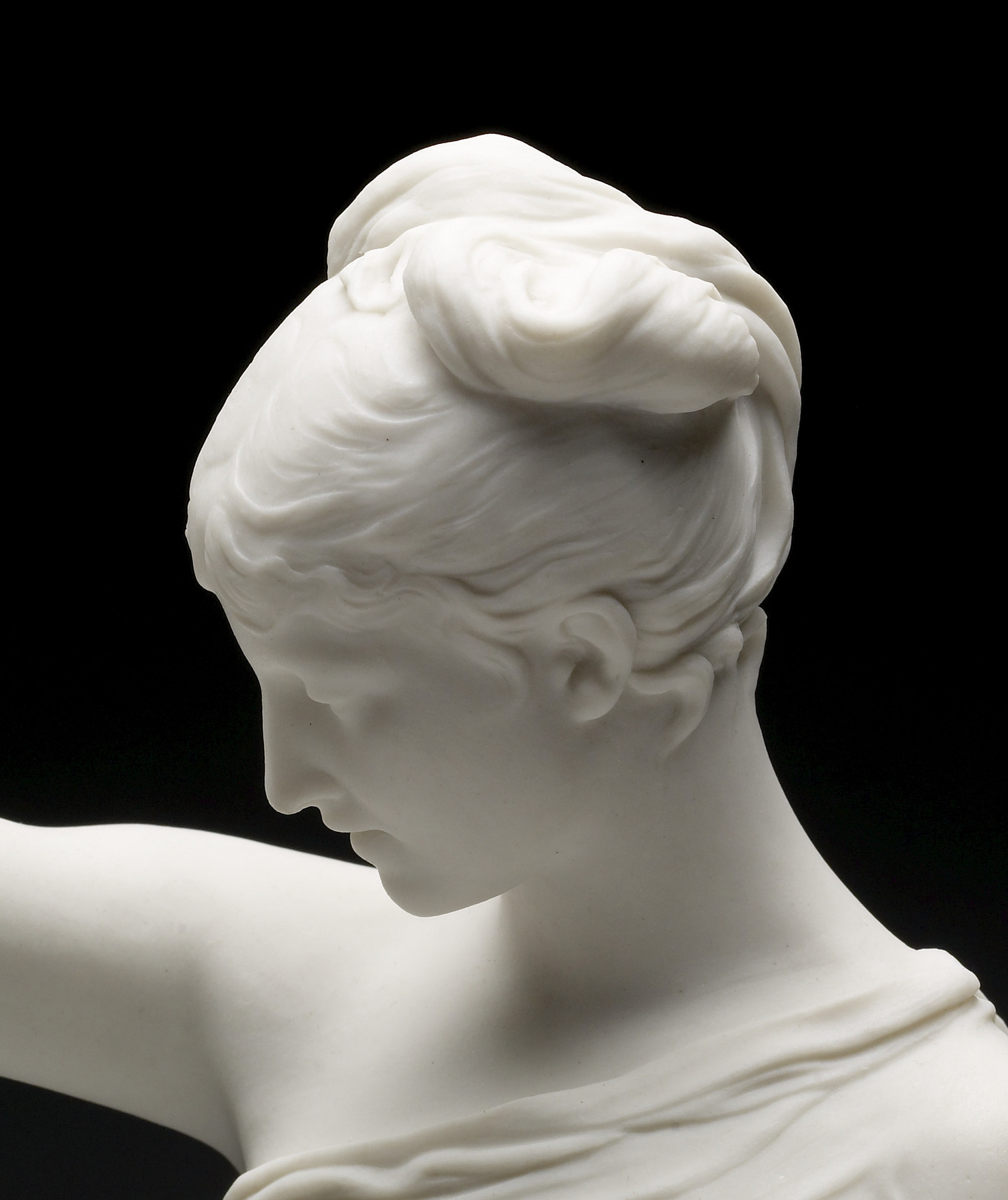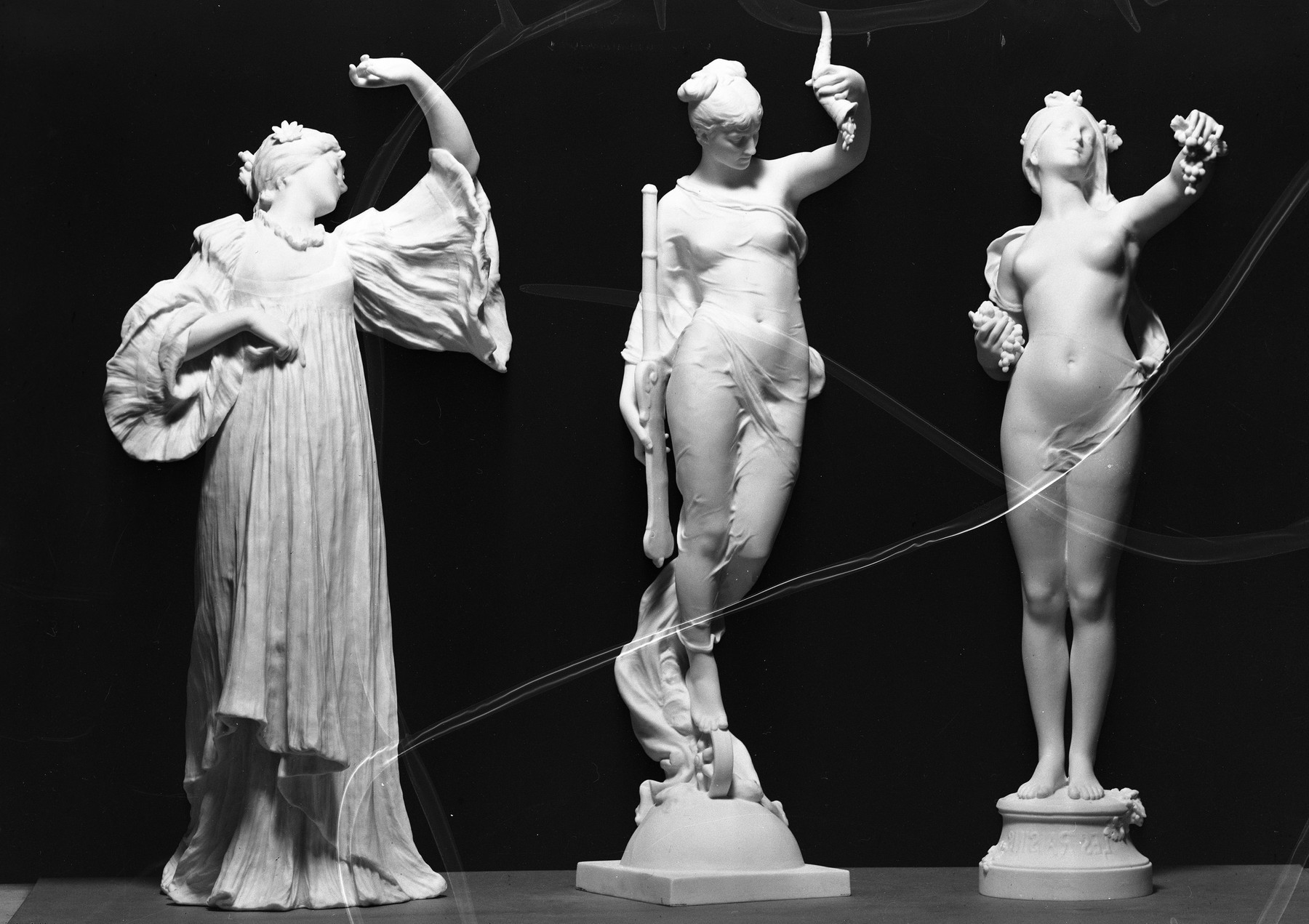Fortune
(18th and 19th Centuries )
This figure, symbolizing Fortune, was one of the French sculptor Moreau-Vauthier's most famous works. It was originally exhibited in an almost life-size version in 1878, and due to the work's success, it was replicated in many different materials, including ivory and bronze. This porcelain version is marked with the date 1900, and it is likely that Henry Walters purchased it from the Exposition Universelle in Paris that year. Versions of this sculpture in ivory were owned by Henry's contemporaries, Mary J. Morgan and William H. Vanderbilt.
Inscription
Provenance
Provenance (from the French provenir, 'to come from/forth') is the chronology of the ownership, custody, or location of a historical object. Learn more about provenance at the Walters.
Acquired by Henry Walters, Baltimore, ca. 1900; by bequest to Walters Art Museum, 1931. [1]
[1] Found in the former Walters residence at 5 West Mount Vernon Place, Baltimore
Exhibitions
| 2014-2016 | From Rye to Raphael: The Walters Story. The Walters Art Museum, Baltimore. |
Geographies
France, Sèvres (Place of Origin)
Measurements
H: 19 × W: 4 3/4 × D: 7 11/16 in. (48. 2 × 12 × 19.5 cm)
Credit Line
Acquired by Henry Walters, ca. 1900
Location in Museum
Not on view
Accession Number
In libraries, galleries, museums, and archives, an accession number is a unique identifier assigned to each object in the collection.
In libraries, galleries, museums, and archives, an accession number is a unique identifier assigned to each object in the collection.
48.1735

